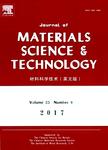Changing Rule of Carbon-Enriched Zone and Diffusion Behavior of Carbon in Aging 0Cr6Mn13Ni10MoTi/1Cr5Mo Dissimilar Welded Joints
Changing Rule of Carbon-Enriched Zone and Diffusion Behavior of Carbon in Aging 0Cr6Mn13Ni10MoTi/1Cr5Mo Dissimilar Welded Joints作者机构:Dept. of Mat. Eng. Dalian Univ. of Technol. Dalian 116024 China
出 版 物:《Journal of Materials Science & Technology》 (材料科学技术(英文版))
年 卷 期:2004年第20卷第3期
页 面:307-310页
核心收录:
学科分类:080503[工学-材料加工工程] 08[工学] 0805[工学-材料科学与工程(可授工学、理学学位)] 0802[工学-机械工程] 080201[工学-机械制造及其自动化]
主 题:Dissimilar welded joint Aging Diffusion Carbides
摘 要:The microstructures, the changing rule of carbon-enriched zone, the diffusion behaviors of elements C and Cr, and the carbide type of 0Cr6Mn13Ni10MoTi/1Cr5Mo dissimilar welded joints after aging at 500℃ for various times and after long-term service in technical practice were investigated by using the optical microscopy electron probe microanalysis, scanning electron microscopy (SEM), and transmission electron microscopy (TEM). The results show that in aging 0Cr6Mn13Ni10MoTi/1Cr5Mo dissimilar welded joints, the main carbides are M_3C and a few carbides are M_7C_3 and M_(23)C_6. The M_3C carbide decomposition and dissolution with increasing aging time or aging temperature and the anti-diffusion of C and Cr cause the decrease and disappearance of the carbon-enriched zone. The results are different from those of the A302/1Cr5Mo dissimilar welded joints in previous studies.



